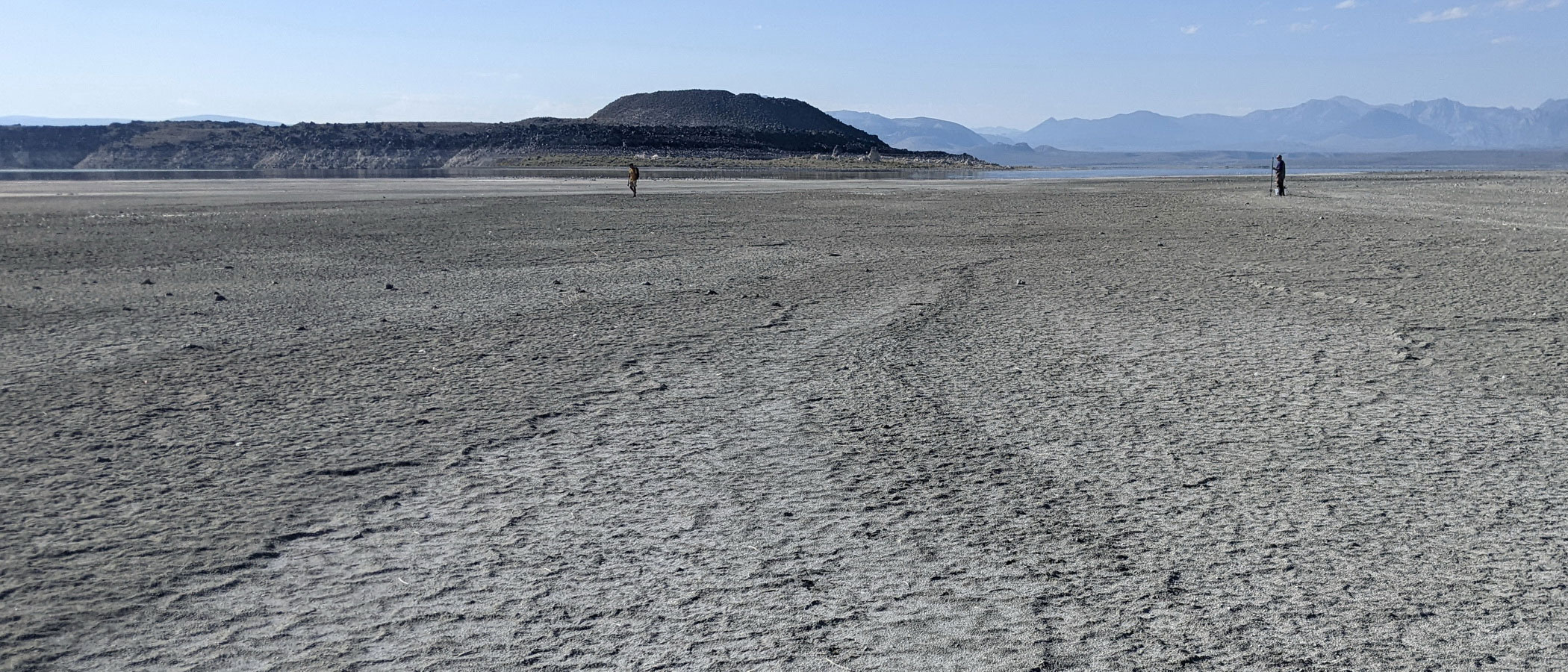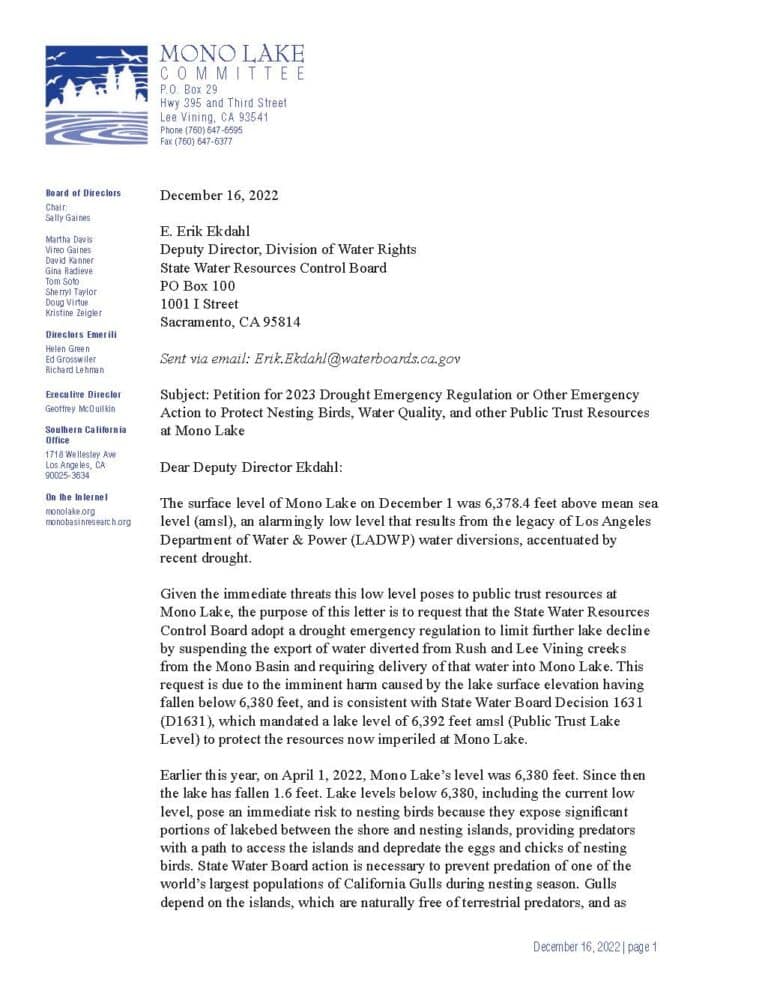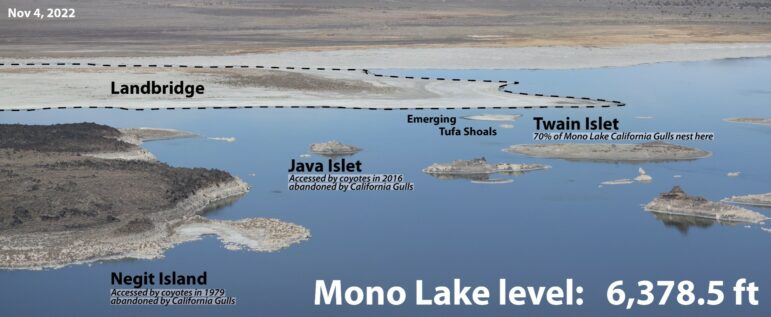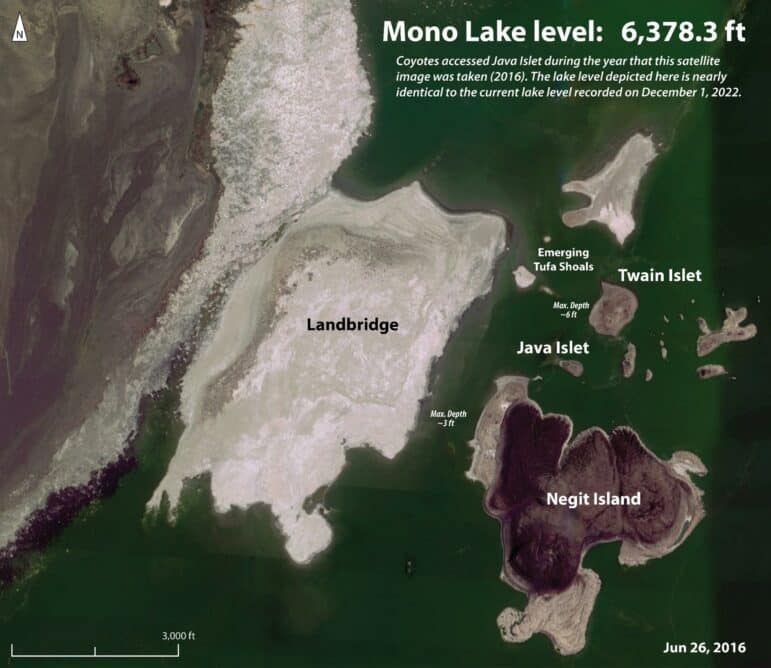
On December 16, 2022 the Mono Lake Committee submitted a request to the California State Water Resources Control Board for an emergency action to protect Mono Lake by addressing the developing ecological crisis due to the lake surface elevation having fallen below 6380 feet above sea level, which threatens the nesting California Gull population and dangerously increases lake salinity.

The Committee requested that the Board issue an emergency regulation, or take other action, suspending the export of water diverted from Rush and Lee Vining creeks and requiring delivery of that water into Mono Lake until Mono Lake has risen to 6384 feet above sea level.
Mono Lake is dangerously low due to the legacy of Los Angeles Department of Water & Power (DWP) water diversions, worsened by recent drought. This means that predators can cross exposed lakebed to access critical nesting islands, and that high salinity in violation of federal standards is impairing the lake ecosystem. It makes sense to deliver all the water possible into the lake to raise its level and deliver the protections already mandated by the State Water Board.
The Committee did not submit this petition lightly. The current situation is well established as an emergency, in substantial part by the State Water Board’s own analysis for its landmark protection action Decision 1631 (D1631). After 28 years, the Board and all parties expected the level of Mono Lake to be much higher, eliminating the challenge of predators using the landbridge.
But with the lake instead lingering at the present low level, immediate action is necessary to achieve the public trust protections for Mono Lake set forth in D1631. In 1994 the Board concluded that water is the nature-based solution that ensures protection of the nesting gulls and a host of public trust resources, and that Mono Lake must be managed at a level 14 feet higher than it is now.

In the filing the Committee outlined the multiple factors and increasing urgency of the emergency situation. These include:
- Legacy impacts of water diversions on Mono Lake, accentuated by drought. Mono Lake has not yet recovered from decades of excessive water diversions nor achieved the level required by the State Water Board to protect public trust resources, leaving its unique ecosystem impaired and millions of migratory and nesting birds at risk. Today the lake is only 20% of the way to the mandated level.
- This year the lake has dropped so low that coyotes can access nesting islands that support one of the world’s largest nesting California Gull populations, creating a high risk of colony depredation and disruption.
- Some 70% of Mono Lake’s nesting California Gull population uses one small islet near the landbridge. Point Blue Conservation Science, which has been studying this gull population at Mono Lake for nearly 40 years, informed the Committee that if coyotes access this islet in the spring, not only would eggs and chicks be depredated, but multi-year disruption to the colony would also occur.
- While the Committee is working with State and Federal agencies to install emergency fencing to protect the gulls in 2023, fencing is far from foolproof. Coyotes look constantly for opportunities to get past the fence, and if the lake falls further the increased size and extent of the landbridge will make fencing ineffective.
- Clean Water Act protections recognize the “exceptional ecological significance” of Mono Lake and set a maximum salinity level that has now been exceeded; DWP water diversions cause further degradation of lake water quality in violation of the requirement.
- The Committee reached out to DWP about the emergency situation on November 30, 2022, requesting voluntary action to deliver more water to Mono Lake. Two weeks later DWP responded indicating it does not intend to take any voluntary actions to address the emergency situation by reducing export of water diverted from Mono Lake’s tributary streams.
The Committee recognizes that the drought has caused serious shortages for water users in many parts of the state, and that DWP is rightfully concerned about where it will get water to replace the 4,500 acre feet (less than 1% of the City’s supply) the emergency regulation would require to remain at Mono Lake. The City has a diverse water supply portfolio, which means there are many ways to increase the city’s local water supply, which enhances DWP’s ability to meet its responsibilities at Mono Lake.
The Committee has already been working with Los Angeles community organizations and state agencies to secure grant funding for water efficiency programs and local supply projects to bolster DWP’s efforts to reduce reliance on imported water and to jointly benefit Los Angeles and Mono Lake.

The State Water Board has acknowledged receipt of the Committee’s filing and we expect to hear soon about a process for considering action on the request. We are advocating that action take place over the next few months given the urgency of the situation, and we are confident there will be opportunities for public comment. If the low level of Mono Lake concerns you please be sure you are signed up for our email action alerts so we can keep you informed of these upcoming opportunities to share your thoughts and affect the important decisions that will be made.
Stay connected with Mono Lake
Top photo by Robbie Di Paolo: Mono Lake Committee staff on the emerging landbridge, September 2022.
